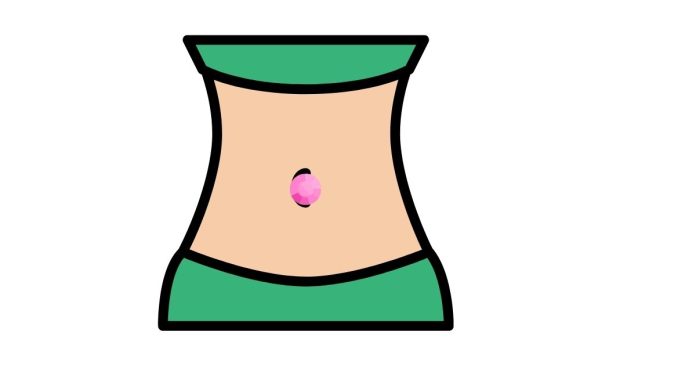A navel piercing rejection occurs when the body starts to push the jewelry out, and the piercing no longer stays in place. Here are common signs that your navel piercing might be rejecting:
- Pain or Discomfort: Mild discomfort is normal right after piercing, but if the pain persists or increases, it could be a sign of rejection.
- Redness and Swelling: If the area around the piercing becomes increasingly red or swollen, especially after the initial healing period, it might indicate that your body is trying to reject the jewelry.
- Migration of the Jewelry: One of the most noticeable signs of rejection is when the jewelry starts to move or shift from its original position. You may notice the piercing looks shallower or off-center.
- Increased Discharge or Pus: If the piercing is secreting a thick, yellow, or green pus that doesn’t seem to clear up, it could be a sign of infection or rejection.
- Visible Scarring: A piercing that is rejecting will often leave behind a visible scar, especially around the edges of the piercing hole.
- Jewelry Starts to Stick Out: When a piercing starts to reject, it often becomes more superficial. The jewelry may no longer sit flush against the skin and may appear more pronounced, like it’s sticking out.
- Thinning of the Skin Around the Piercing: If you notice the skin around the piercing becoming thinner or feeling more fragile, the body might be pushing the jewelry out.
What to do if you suspect rejection:
- Consult a Professional: If you think your navel piercing is rejecting, it’s important to see a professional piercer or a dermatologist for guidance. They may recommend changing the jewelry to something smaller or a different material or removing the piercing entirely.
- Aftercare: Continue cleaning and caring for your piercing as instructed by your piercer. Avoid irritation or pressure on the area, which can exacerbate rejection.
- Avoid Touching: Try not to touch or twist the jewelry unless you’re cleaning it. Constant manipulation can cause irritation, which may lead to rejection.
If the rejection is significant, the only option may be to remove the jewelry and allow the hole to close up naturally.



